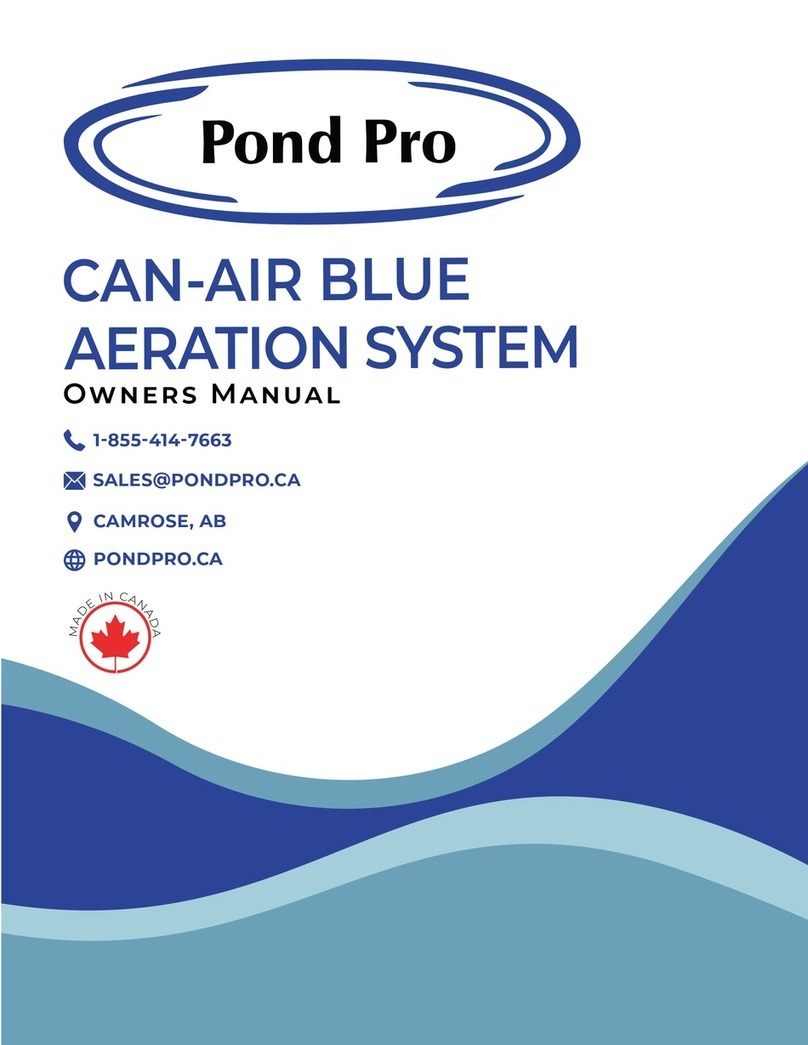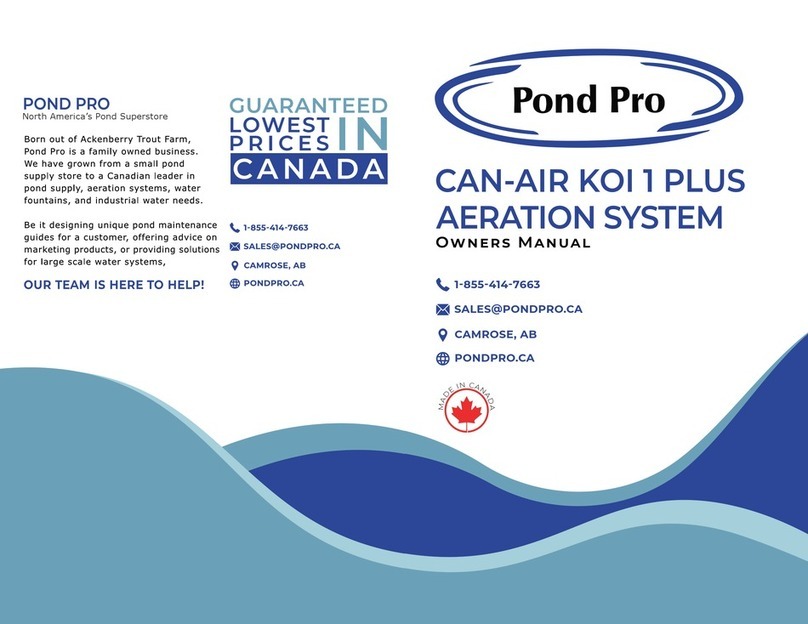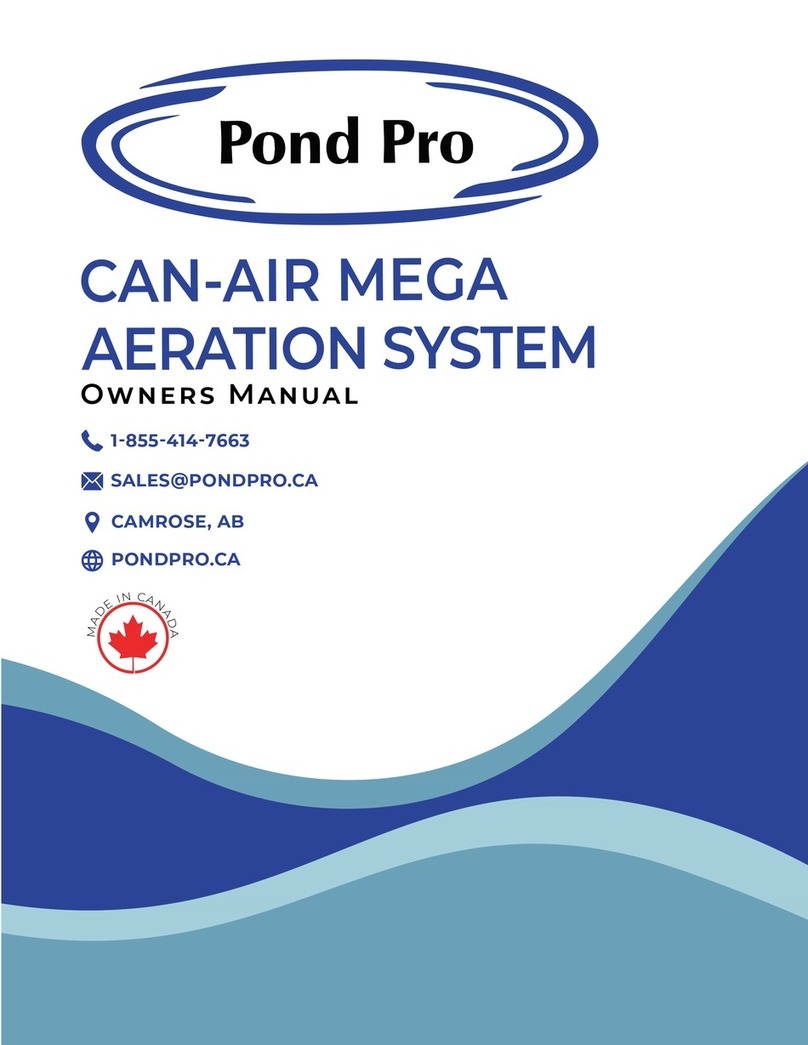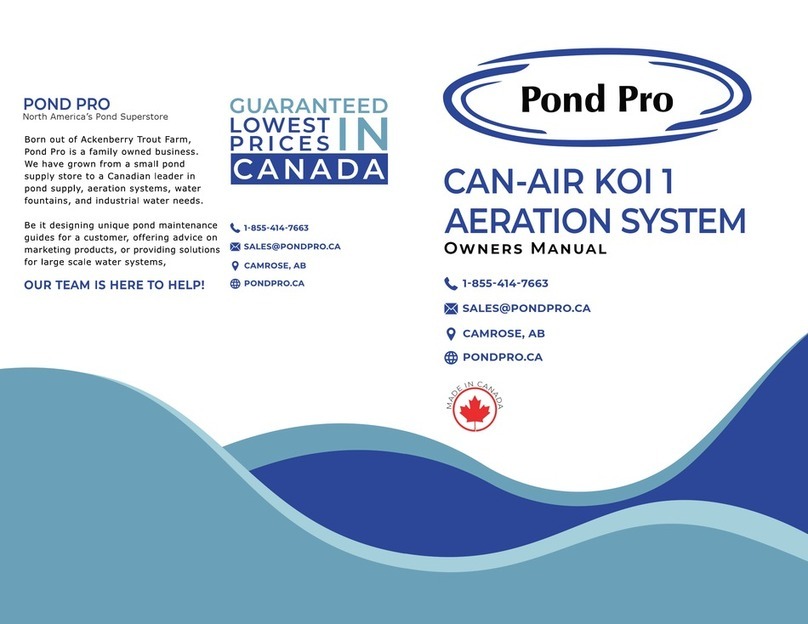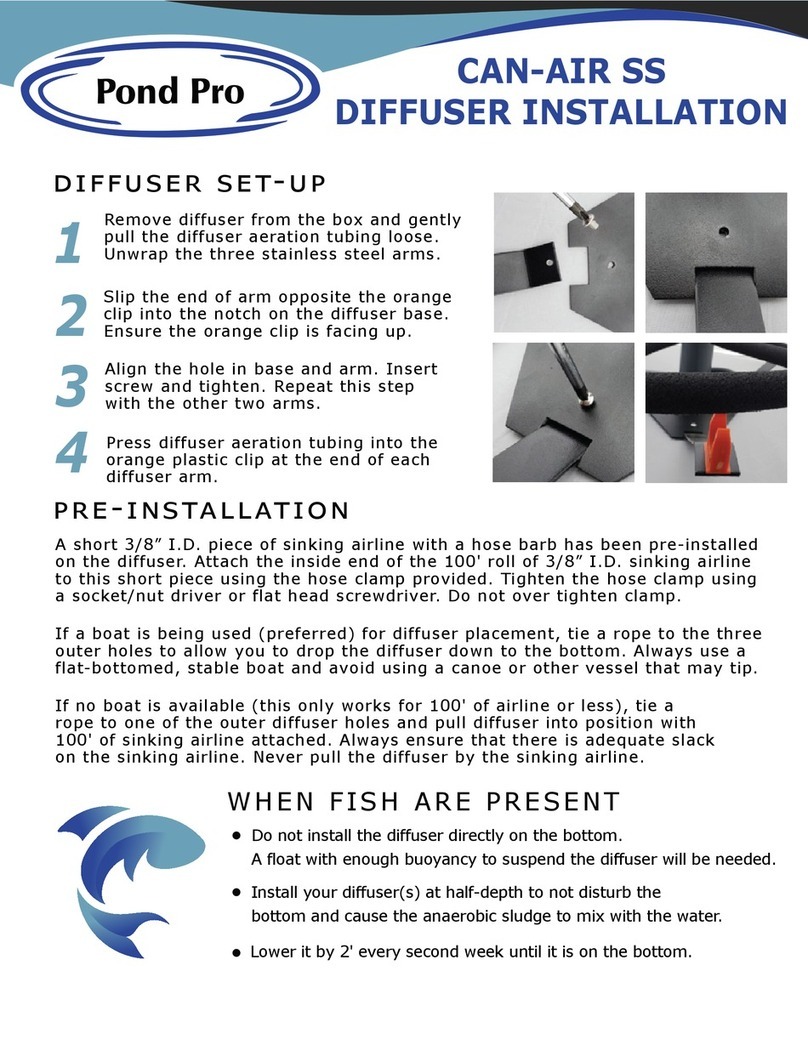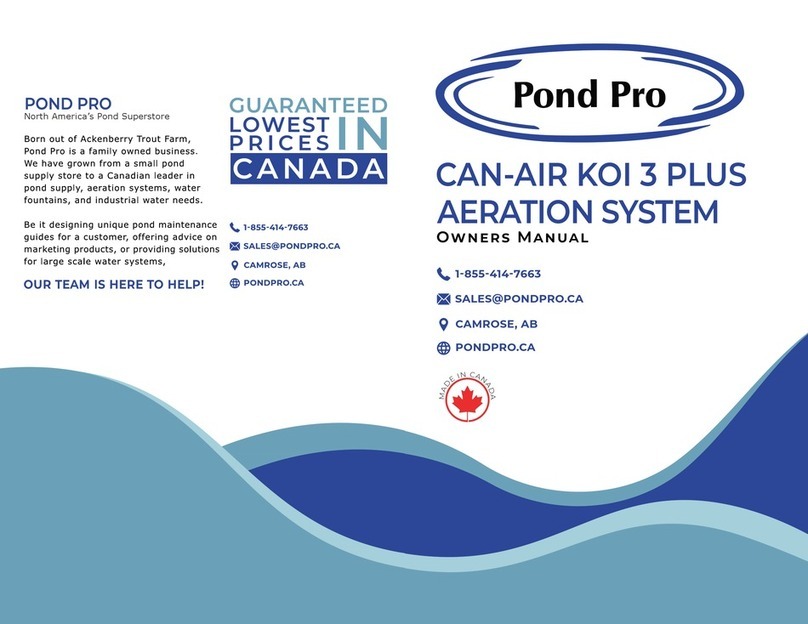
DIFFUSER
INSTALLATION
Consider where the Can-Air Diffuser(s) are to be located in the pond. Proper
diffuser placement is key for aeration efficiency. If using more than one, space
the diffusers equally from one another in a depth that embodies the majority
of the pond. Contact Pond Pro with any questions on placement.
2
Load your boat with the pre-assembled diffuser and the 100'roll of 3/8” I.D.
sinking airline already attached. If the diffuser is more than 100'from the
compressor, additional rolls of 1/2” I.D. sinking airline will be required . For
every extra roll of sinking airline, you will need one hose barb connector and
two hose clamps.
3
Position the boat near the pre-determined diffuser location. Slowly lower the
diffuser into the water. Make sure the diffuser is being lowered upright and level.
Do NOT drop the diffuser in an upside down or sideways orientation. Use the
[optional] rope to guide the diffuser, or release the diffuser at the surface and
allow it to sink to the bottom naturally. Always ensure that there is a sufficient
amount of airline to avoid strain on the connection when dropping the diffuser.
4
1
5
Once the diffuser is positioned, the [optional] rope may be kept in place and
tied to a buoy for easier locating of the diffuser in the future. Slowly unspool
the 3/8’’ I.D. airline into the water and make your way back to the shore
where your compressor is located. Connect the airline to the compressor
manifold/barbs and secure with clamps.
WHEN FISH ARE PRESENT
Do not install the diffuser straight to the bottom. A float with
enough buoyancy to suspend the diffuser will be needed.
Install your diffuser(s) at half-depth to not disturb the
bottom and cause the anaerobic sludge to mix with the water.
Lower it by 2' every second week until it is on the bottom.
For systems with two or more diffusers, repeat steps 1-3 for every diffuser.
Once all diffusers are placed and properly connected to compressor
manifold/barbs, the diffusers are ready to be balanced (in a multi-diffuser
system set-up) or the system is ready to start up.
To balance the diffusers, turn on the compressor and visually inspect the
diffusers’ bubbling performances. In small ponds this can be done from shore.
In larger ponds/lakes, visual inspections may need to be done from the boat.
Diffusers should all have similar bubbling action. If one appears weaker, reduce
the air flow to the other diffuser(s) by adjusting the ball valve(s) on the
manifold. Once the diffusers appear equal, your system is ready to operate!
Please note: Diffusers are weighted and self-righting but proper placement
can be confirmed by checking for a rising pillar of bubbles, after connnections
and power set up are complete.
07


